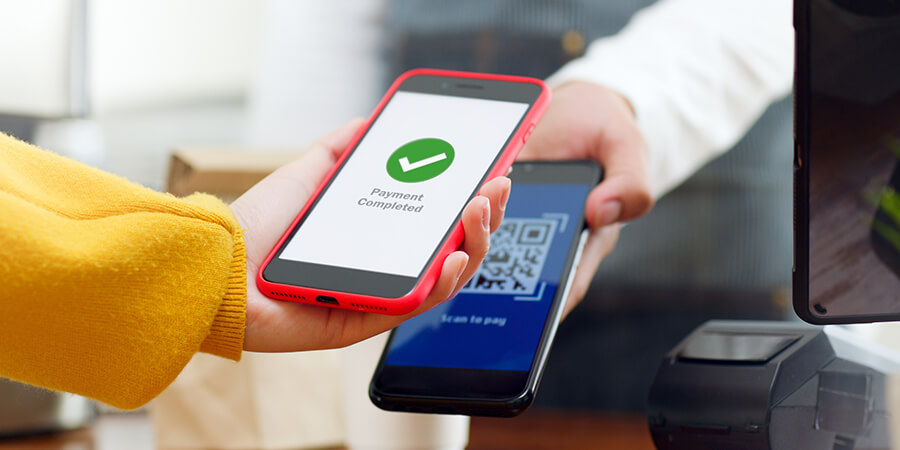Mobile payments have revolutionized financial transactions by providing convenience, speed and security. In the rapidly evolving technology landscape of Asia Pacific, mobile payments are not just a passing trend but a powerful force driving financial inclusion and economic growth. Looking ahead, it is clear that mobile payments will play an increasingly crucial role in shaping the financial landscape of the Asia-Pacific region.
Asia Pacific has been a hub for mobile payment innovation, with countries like China and South Korea leading the way. Consumers in these countries have rapidly adopted mobile wallets and payment apps, leading to a cashless society where even street vendors accept digital payments. This trend is expected to continue and expand throughout the region.
Pushing for Cashless Countries
Furthermore, China has become the leader in mobile payment usage over the last 20 years. In 2021, more than 87% of China's internet users were using mobile payment services. This success can be attributed to high rates of internet usage, a supportive regulatory framework and the government's push for a cashless society. The COVID-19 pandemic has also played a role in the introduction of the digital yuan to replace physical bank notes.
The two leading mobile payment platforms in China are Alipay and WeChat Pay, each with over a billion users. Alipay is a mobile payment app and digital wallet that offers additional services such as ordering a taxi, applying for a credit card and buying insurance. WeChat Pay is integrated within the instant messaging app WeChat and allows users to leave their physical wallet at home and use only their smartphone or smartwatch.
These payment platforms allow users to make purchases in stores or online and even pay for things like transportation and utility bills. Due to their convenience and flexibility, mobile payments have become an essential part of everyday life for many Chinese consumers.
Meanwhile, South Korea is seeing a rise in digital payment transactions, indicating a growing trend towards cashless payments. With one of the highest rates of smartphone usage in the world, more South Koreans are turning to mobile payment methods. The Digital Payments segment is expected to reach a total transaction value of US$205.40 billion by 2023, with Digital Commerce being the largest segment at US$165.40 billion.
There are three payment apps in South Korea: KakaoPay, Naver Pay and Toss Payments. KakaoPay is a mobile payment and digital wallet service that offers a range of financial services, while Naver Pay provides QR-based payment solutions for businesses. Toss Payments is an app-based platform for banking, investment and insurance management that offers a simple remittance service. These apps are leading the way towards a wallet-less society where all economic activity can be pursued through a smartphone.
Mobile payment innovation has been observed in neighboring countries to varying degrees. Countries like Singapore, Malaysia and Thailand have seen the rise of mobile payment solutions such as GrabPay, Boost and TrueMoney, which have become popular among users for their convenience in making payments and transferring money. These countries have also witnessed an increase in the use of QR code-based payments, making it easier for merchants to accept mobile payments.
Mobile Transactions Surpassing the Cash Transactions
In 2020, the Asia-Pacific region had a population of over 3.5 billion, which is about 48% of the world's total population. Boku predicts that the use of mobile wallets in the region will increase from 42.1% (1.8 billion users) in 2020 to 58.6% (2.6 billion users) in 2025. Additionally, the transaction volume is expected to increase from 377 billion in 2020 to 636 billion in 2025, and the transaction value is expected to increase from US$4.1 trillion in 2020 to US$7 trillion in 2025.
Additionally, Japan had a mobile wallet penetration rate of 70.6% in 2020, and it is expected to reach 98.6% in 2025. The Japanese market is projected to have over 123 million users by 2025, and this number is expected to continue growing. The Tokyo Olympics in 2021 encouraged more cashless payments to make Japan more tourist-friendly, resulting in the widespread deployment of contactless point-of-sale terminals and the promotion of mobile wallets. The increasing popularity of smartphones, high unbanked rates in emerging markets, the rise of e-commerce, security, flexibility and convenience are some of the reasons why people are turning to mobile wallets.
According to Wong Loke Hwee, Boku's vice president and general manager for the Asia-Pacific region, credit card usage is very low in many Asian countries, with less than 10% of the population using them. As a result, credit cards are not meeting the needs of consumers.
Mobile wallets, on the other hand, are already the most popular payment method in Asia. In 2020, mobile wallets accounted for over 40% of point-of-sale transactions in the Asia-Pacific region, while cash made up only 19.2%. Mobile wallets offer consumers the convenience of online transactions, like credit cards, while also providing the flexibility and ease of use of cash.
Further, Jon Prideaux, CEO of Boku, believes that there has been a significant shift in consumer purchasing power from the West to the East, from established to emerging markets, and from credit cards to mobile payments. To take advantage of the massive potential of mobile-first consumers, merchants need to accept the payment methods that consumers prefer, which are increasingly mobile-based. With mobile payments now surpassing credit cards globally, accepting mobile payments has become a strategic imperative for merchants.





